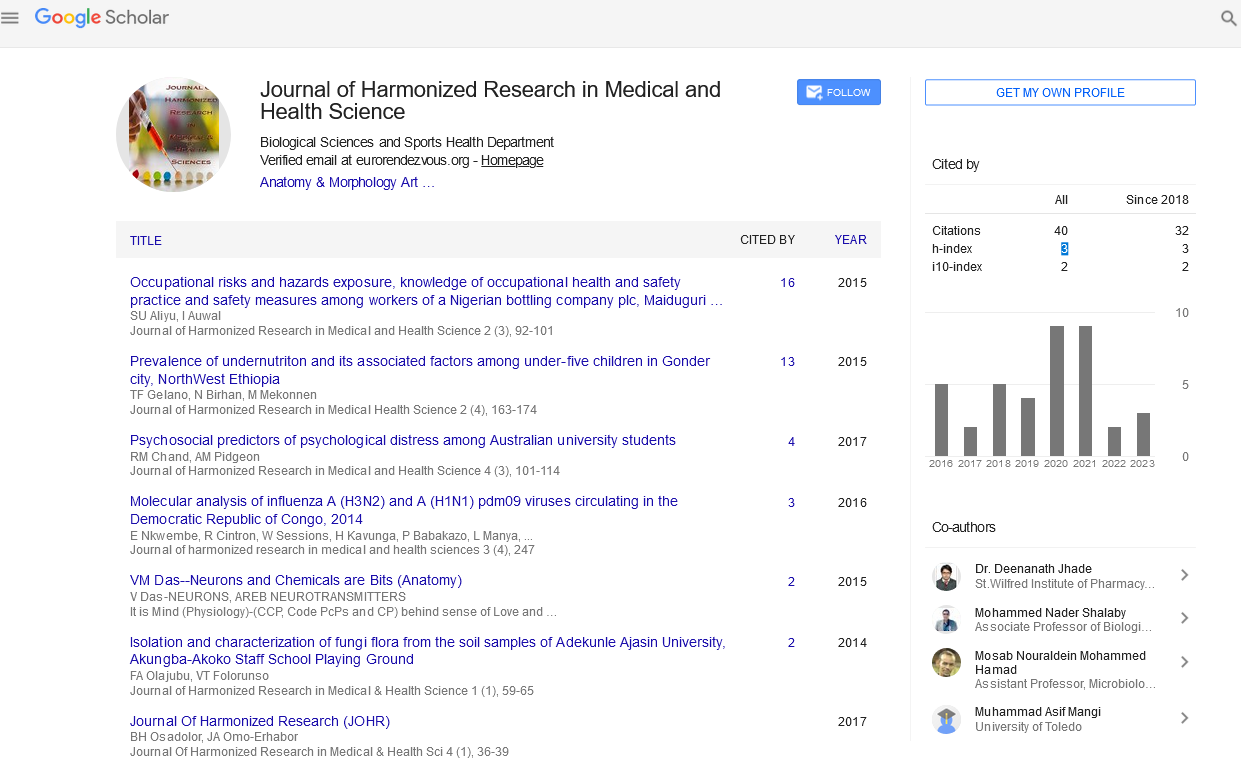PREVALENCE OF HOUSEHOLD FOOD INSECURITY AND ITS ASSOCIATION WITH NUTRITIONAL OUTCOMES OF CHILDREN AGED 6-59 MONTHS IN HOSSANA TOWN, HADIYA ZONE, SOUTHERN ETHIOPIA
Abstract
Author(s): Kidist Daniel,Tefera Belachew, Chernet Hailu,Ermias Abera
Back ground: Food insecurity and consequent of malnutrition are major barriers to development in Ethiopia. High malnutrition rates in the country set a substantial obstacle to attaining better child health consequents. This study was tried to explore the magnitude of household food insecurity and nutritional status among children aged 6 to 59 months, as well as the association between food insecurity and nutritional status in the study area. Objective: To assess the prevalence of household food insecurity and its association with nutritional outcomes of children aged 6-59 months in Hossana town. Methods: A cross sectional study design was conducted to assess prevalence of household food insecurity and nutritional outcomes of children in Hossana Town. Before data collection list of households with eligible children were identified from health extension workers and proportionate to sample size allocation was employed to each kebele. A total 414 sample households were selected from each kebele using systematic random sampling method by calculating the sampling interval (k=4). Data was cleaned and entered into computer by using EPI Info version 3.5.3 and the analysis was done using SPSS version 20.Anthropometric data were entered in WHO anthrosoftware version 3.2.2.Different frequency tables and descriptive measures were used to describe the study variables. Bivariate and multivariable logistic regression was done to see the association between dependent and independent variables. Results: The result of this study shows8% of children were wasted, 14.4 % were underweight and 43.3 % were stunted. Prevalence of household food insecurity was 79.1 %. Household food insecurity was associated with underweight (AOR= 4.0, 95% CI: 1.33- 11.39). Child age (AOR=0.056, 95% CI: 0.011- 0.288)and child sex (AOR=2.05, 95% CI: 1.186-3.556) were associated with stunting. Family size (AOR=3.9, 95% CI: 2.097- 7.355) and diarrhea (AOR= 8.1, 95% CI: 3.678-17.86) in the last two weeks preceding the survey were predictors of wasting and underweight respectively. Conclusions: Household food insecurity and malnutrition like underweight, wasting and stunting was high in Hossana town. Household food insecurity was associated with underweight, but not significantly associated with stunting and wasting. Therefore, implementers should focus on improving household food insecurity and nutritional status. Key words: Stunting, Wasting, Underweight and Food insecurity.










